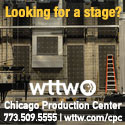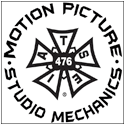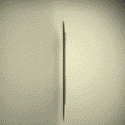
Believe it or not, it has been 15 years since Batman patrolled the streets of Chicago for the filming of The Dark Knight. The superhero film, directed by Christopher Nolan, was released on July 18, 2008.
The Dark Knight is the second installment in Nolan’s Batman trilogy, following Batman Begins (2005) and preceding The Dark Knight Rises (2012). The Dark Knight features the iconic DC Comics character, Batman. The film explores the psychological and moral challenges faced by Batman (played by Christian Bale) as he tries to protect Gotham City from the chaos caused by the Joker (played by Heath Ledger).
The film went on to become a box office sensation and critical success. The Dark Knight’s release was highly anticipated, given the acclaim of its predecessor, Batman Begins, and the excitement surrounding Heath Ledger’s portrayal of the Joker. Ledger’s performance, unfortunately, became all the more poignant after his untimely death in January 2008, making The Dark Knight one of the most anticipated and emotionally charged films of the year.
Deeply connected to Chicago, The Dark Knight was extensively filmed in the city, utilizing its urban landscapes to depict Gotham City. The majority of the film shoots were done in Chicago and its suburbs, while some of the film was shot in London. Chicago was chosen as a stand-in for Gotham City due to its architectural grandeur and unique skyline. The film showcases various famous Chicago landmarks, such as the Chicago Board of Trade Building, the Richard J. Daley Center, and the LaSalle Street Bridge, among others.
The city’s distinctive features, including its elevated trains and gritty urban atmosphere, helped create a visually striking backdrop for the film’s action sequences and intense drama. The filmmakers also took advantage of Chicago’s iconic locations, such as Navy Pier and the Lower Wacker Drive, to bring a sense of authenticity to Gotham City’s dark and brooding atmosphere.
Additionally, Chicago’s involvement in The Dark Knight extended beyond its role as a filming location. The city’s residents were enthusiastic participants during the production, often lining up along the streets to catch glimpses of the filming process. The collaboration between the filmmakers and the city of Chicago contributed to the film’s overall immersive experience and added an extra layer of realism to the fictional world of Gotham City.
Here are some fun facts about The Dark Knight and its connection to Chicago:
The famous car chase scene was filmed in Chicago. One of the most thrilling sequences in the movie is the car chase between the Joker and Batman. It was filmed on Lower Wacker Drive, a subterranean roadway in downtown Chicago known for its unique underground layout.
The Chicago Board of Trade building was “dressed up” to become Wayne Tower. The filmmakers removed a clock and added the Wayne logo to make its already imposing presence look slightly more forbidding.
The Old Chicago Main Post Office became the Gotham National Bank that was targeted by the Joker. The building opened in 1930 but was vacant at the time Nolan shot the film.
Chicagoans were cast as extras. The filmmakers held open casting calls in Chicago, giving local residents the opportunity to appear as extras in various scenes throughout the film. This added a touch of authenticity and community involvement to the production.
The film had a positive impact on Chicago’s economy. The production of The Dark Knight brought significant economic benefits to the city. It generated revenue for local businesses, created job opportunities, and increased tourism as fans flocked to visit the filming locations.
Chicago’s police department played a role in the film. Several scenes in the movie involved the Gotham City Police Department. To achieve authenticity, the production team worked closely with the Chicago Police Department, using their uniforms, vehicles, and even real police officers as extras.
The iconic scene with the Joker hanging out of a window was filmed in Chicago. The scene where the Joker dangles out of a window during the parade sequence was shot on LaSalle Street in downtown Chicago. It showcased the city’s unique architecture while creating a dramatic visual moment.
The film’s success led to increased interest in Chicago as a filming location. Following the release of The Dark Knight, Chicago gained popularity as a desirable filming location for other major productions. The success and exposure of the film helped solidify the city’s reputation as a versatile and visually appealing destination for filmmakers.
In celebration of the film’s 15th anniversary, here are some more fun facts about The Dark Knight:
Heath Ledger’s portrayal of the Joker:
Heath Ledger’s performance as the Joker is widely praised and considered one of the most memorable portrayals of the character. His dedication to the role included keeping a Joker diary, experimenting with different voices, and even directing home videos in character to develop the role.
The Joker’s makeup:
Heath Ledger was actively involved in the creation of the Joker’s makeup. He collaborated with makeup artist John Caglione Jr. to develop the iconic smeared and disheveled look, which became an integral part of the character’s visual identity.
The improvisation of the hospital explosion scene:
In the scene where the Joker detonates a hospital, the explosion did not go off as planned. However, Heath Ledger stayed in character and continued with the scene, improvising by repeatedly pressing the detonator until the explosion finally occurred. The unanticipated explosion made it into the final cut of the film and added to the chaotic nature of the scene.
The interrogation scene: The intense interrogation scene between Batman and the Joker, where they face off in an interrogation room, was largely improvised. Christian Bale and Heath Ledger rehearsed the scene multiple times to ensure the dialogue felt spontaneous and natural.
The Hong Kong sequence was shot in IMAX:
The Dark Knight was one of the first major motion pictures to feature scenes shot in IMAX format. The thrilling sequence in which Batman captures Lau in Hong Kong was filmed using IMAX cameras, providing a visually immersive experience for the audience.
Hans Zimmer’s score:
The film’s score, composed by Hans Zimmer and James Newton Howard, became iconic and is often recognized for its intense and pulsating theme associated with the Joker. Zimmer used a musical motif called The Joker’s Theme, which incorporated dissonant and unsettling sounds to reflect the character’s chaotic nature.
The posthumous Oscar win for Heath Ledger:
Heath Ledger’s performance as the Joker earned him a posthumous Academy Award for Best Supporting Actor. Ledger became only the second actor to receive an Oscar in a major category after his death, highlighting the impact of his remarkable performance.
Record-breaking box office success:
The Dark Knight was a massive box office success, grossing over $1 billion worldwide. It became the fourth film in history to reach that milestone at the time and received critical acclaim for its storytelling, performances, and visual effects.
The Dark Knight is often considered one of the greatest superhero films of all time and is credited with elevating the standard of storytelling in the genre. It remains a benchmark for subsequent superhero films and set the stage for the continued popularity of gritty and realistic reimaginings of comic book characters.
ALSO READ: National Lampoon’s Vacation returns to theaters for 40th anniversary
Sign up for our free elert here and follow us on Facebook, Twitter, Instagram and YouTube.

















